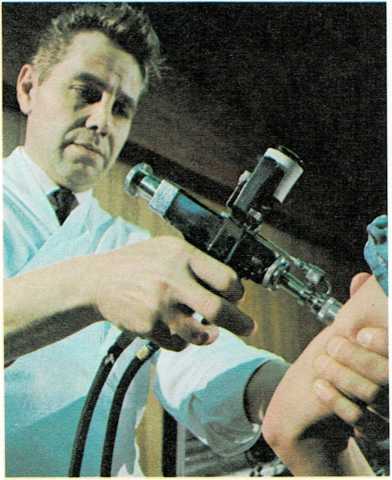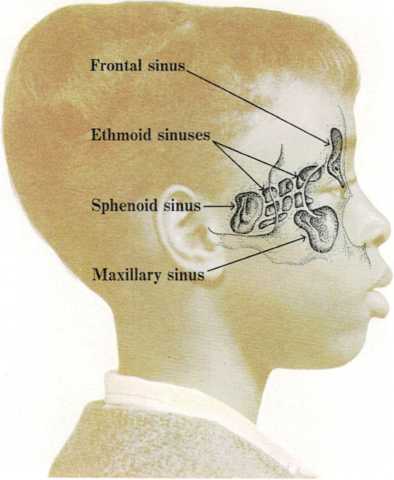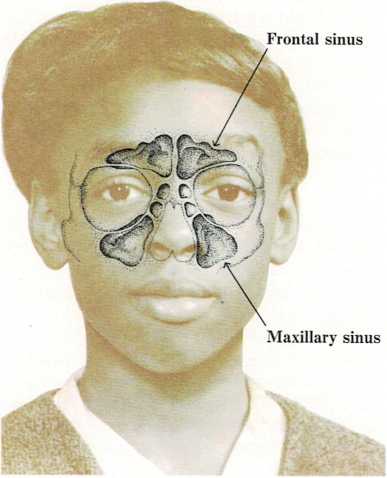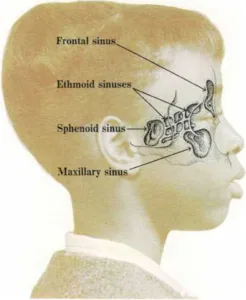Shots – Sinusitis
Shots that children usually receive may be divided into three
categories: (1) preventive, to avoid a disease; (2) curative, to rid one
of a disease; and (3) desensitizing, to decrease allergic reactions.
Children are injected with their first preventive shots early in life.
Doctors usually give a diphtheria-whooping cough-tetanus shot (DPT) when
a child is around 2 months of age. Polio vaccine is given orally at the
same time. Later, shots are given to prevent measles, German measles,
mumps, and hemophilus influenzae infections.
Curative shots, such as antibiotic drugs, not only cure a disease, but
also often pre

Hypospray is a painless way of giving shots. Air pressure forces the
liquid drug or vaccine through pores of the child’s skin and into the
child’s body.
asks, “Will it hurt?” You might tell a toddler that it will hurt a tiny
bit, but not much, and that the doctor is a friend and wants to keep him
or her well. You can minimize your infant’s crying and comfort him or
her if you lean over the baby’s face so that he or she can see you when
the doctor gives the shot. M.G.
See also Allergy; Immunization
Sinusitis is an inflammation of one or more sinuses. The sinuses are
cavities in the skull. They are lined with mucous membranes that are the
same as, and join with, the mucous membranes of the nose. When a child
has a cold or other infection in the nose, the infection often spreads
to these membranes.
Normally, mucus drains from the sinuses into the nose through tiny
openings. When the membranes of the sinuses become infected, they swell
and block drainage. Pressure then builds up, and a child may have
severe, throbbing pain over one or both
cheeks. Or, the child may have a severe, general headache. Also the face
may swell. If the sinusitis is chronic (constant), the symptoms may not
be so severe, but the child may have a nasal discharge (sometimes with a
foul odor).
If you think your child has sinusitis, consult your doctor. The doctor
may recommend nose drops, an oral decongestant, or antibiotics. Home
treatment also should include humidifying the child’s room and applying
hot compresses to the child’s nose, [c.f.e.]
Sleep. To avoid needless concern about your child’s sleeping habits,
remember: (1) the length of time a child sleeps decreases as the child
gi’ows older, and (2) two children of the same age do not necessarily
need the same amount of sleep. Each child develops an individual sleep
pattern. This sleep pattern may be affected by several factors.
For example, a preschooler may be so busy learning new things that the
child is
Location of the sinuses

The frontal sinuses are above the eyes. The maxillary sinuses are in
the cheek bones, below the eyes. The ethmoid sinuses are above the
nasal cavity. The sphenoid sinuses are behind the ethmoid sinuses.


